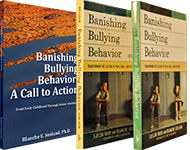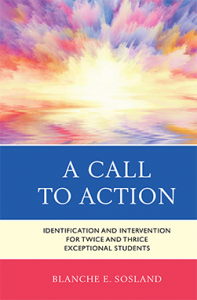List at least five resources that should become available immediately for victims of peer abuse.
We use the term abuse and bullying synonymously. An interesting side-note is that current reports indicate that 899,000 reports of child abuse are confirmed annually. In response to that appalling data, our society has created multiple resources and responses – including child abuse investigation services, national data collection, foster care and adoption programs, respite care, termination of parental rights, permanency planning, case management, counseling, prevention services, et al. costing billions of dollars.
For bullying, or peer abuse, which is estimated at between 5,000,000 and 8,000,000 cases annually, there is no national strategy in place. As of this writing 45 states have passed anti-bullying legislation but there are great variations in the bills and many mandates provide no monies or accountability to ensure enforcement of the legislative elements.
Bully vs. Bullier . . .How do you see it?
There are some who have suggested that we should not label children as bullies, that we should talk about children who engage in bullying behaviors lest we stereotype a child who is struggling to find a sense of personal power in a powerless arena. There are some who say that almost every child has been a bullier and/or been bullied and the roles are quite interchangeable. To that point, Dorothy Espelage, Ph.D. of the University of Illinois at Urbana-Champaign says: “Nearly 80 to 90 percent of adolescents report some form of victimization from a bullier at school, and kids who bully a lot also say they’ve been victimized.” Dr. Espelage believes that we should describe bullying as a continuum of behaviors rather than label any child a bullier, non-bullier, or victim.
A colleague, Lynne Lang, is suggesting that we use the term “bullier” rather than bully. She feels that referencing the behavior rather than the label is less judgmental.
Which term, bully or bullier, works best for you? Why?
Give as many reasons as you can for students to become targets.
When students are asked why some of their peers become targets, they usually reply: “Because they are different”. However, the list of differences they identify is almost endless – everything from weight and height to hair color and skin color to lack of agility or too much ability. By the time we vet the list, everyone in the class fits into at least one of the categories, so being different cannot be a legitimate reason.
Discuss what we can do to help witnesses “do the right thing”.
What about those children who witness cruelty and feel helpless to alter the situation? If you can’t protect others, can you ensure safety for yourself? What are the lifelong effects of guilt brought about by not speaking up?
Numerous parents have described childhood situations in which they were acutely aware of a classmate’s raw wounds and did nothing to intervene. Some have even shared poignant stories of having joined the group assault for self-protection. As they watch their children endure the indignities of others, they are racked by painful memories of their own sins of omission and commission. Share your experience as a witness to bullying.



